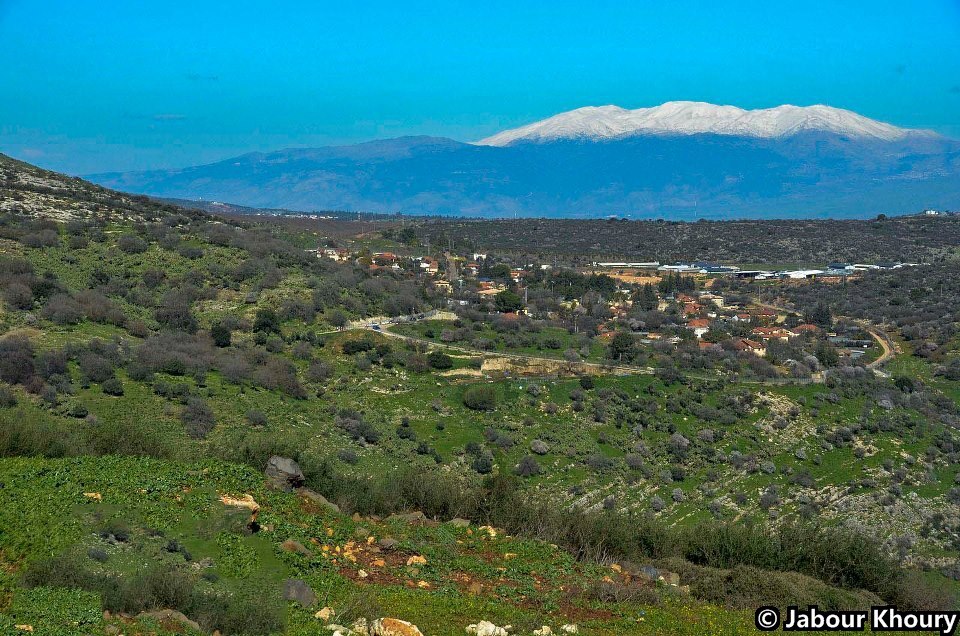Info
District: Safed
Population 1948: 680
Occupation date: 30/10/1948
Jewish settlements on village/town land before 1948: None
Jewish settlements on village/town land after 1948: Dishon
Background:
Dayshum Before 1948
The village stood on rocky but gentle slopes overlooking the ridges along Wadi Fara, which passed to the west. It was near the Lebanese border and was linked via secondary roads to neighboring villages as well as to a highway that led to Safad. In 1596, Dayshum was a village in the nahiya of Jira (liwa’ of Safad) with a population of fifty. It paid taxes on a number of crops, including wheat, barley, olives, and fruits, as well as on other types of produce and property, such as goats, beehives, and a press that was used for processing either olives or grapes. In the late nineteenth century, Dayshum was a “well-built” village with about 400 residents. The village houses were situated on the side of a steep hill near the bottom of a valley and had gabled roofs. The village had three mills arid several small gardens.
The mud and stone homes of the village were built close together. Its entire population was Muslim. Some of these residents were descendants of Algerian immigrants who had fought with ‘Abd al-Qadir al-Jaza’iri against the French colonialists in the 1830s and 1840s; they most likely came with him to the region following his defeat and banishment to Damascus in 1847. As some of their ancestors had been horsemen in Algeria, the villagers of Dayshum took a keen interest in raising horses.
Agriculture, in part dependent upon rainfall and in part irrigated from a creek that coursed through the village, constituted the major source of livelihood for the population. The villagers cultivated mainly grain, fruits, and olives. They also raised livestock and engaged in wood cutting. (Trees to the northeast and southwest of the village provided both fruit and lumber.) In 1944/45 a total of 4,701 dunums was allocated to cereals and 611 dunurns were irrigated or used for orchards. Archaeological sites in the vicinity included two khirbas (Khirbat Dayr Habib and Dayshwi) that contained the ruins of corrals, piles of building stones, cisterns, buildings, columns, and rock-cut tombs.
Occupation and Depopulation
He adds that the village was probably evacuated when news reached it of the massacres at nearby Safsaf and Jish, committed by soldiers of the Sheva’ (Seventh) Brigade Israeli historian Benny Morris writes that Dayshum was empty when Israeli forces entered it on 30 October 1948, in the early stages of Operation Hiram. (see ‘Arab al-Samniyya, Acre District). Units of the same brigade probably reached Dayshum later in the same operation as they went on to annex parts of the Galilee panhandle. Given the location of the village, the inhabitants probably fled (or were expelled ) to Lebanon.
Israeli Settlements on Village Lands
In 1953 the settlement of Dishon was established just to the east of the village site.
The Village Today
Cactuses and thorns grow on the site. The only indications of the former existence of Dayshum are piles of stones from the destroyed houses and terraces. Moshav Dishon exploits the land around the site for animal grazing and apple cultivation.
-------------------------------
Source: al-Khalidi, Walid (ed.). All that remains: the Palestinian villages occupied and depopulated by Israel in 1948. Washington DC: 1992.


